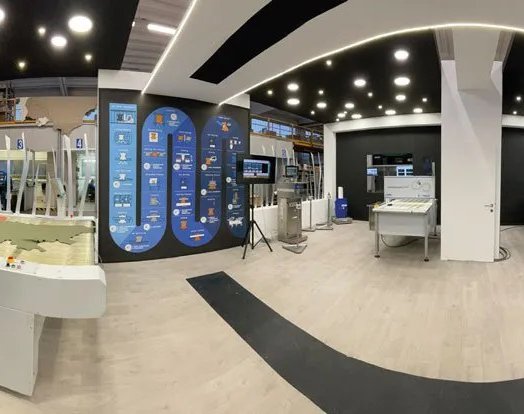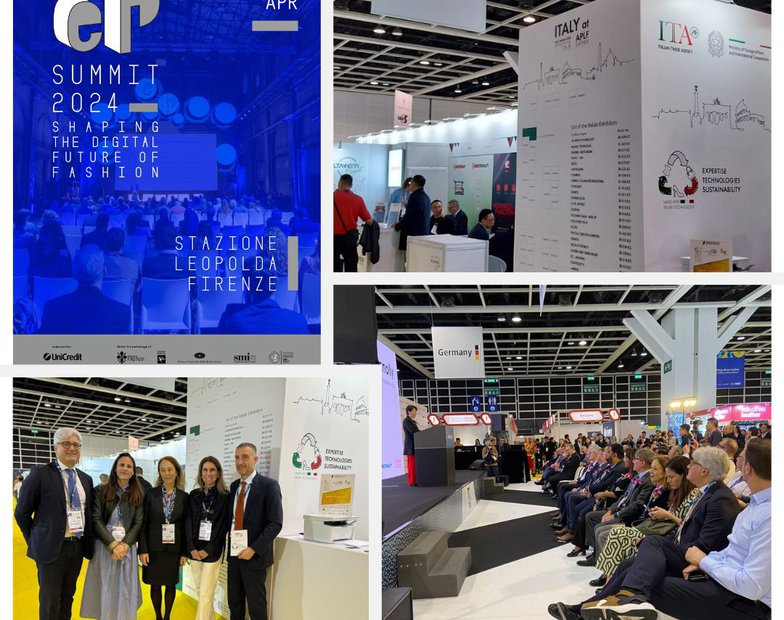There are changes from which we cannot escape: sustainability and ethics are an increasingly inseparable pair. Defining the criteria for properly addressing the problems we are experiencing, is as much the responsibility of individual human beings, as it is of companies. [By MpaStyle]
The need to implement systems that are capable of meeting these unprecedented challenges is a theme that GER, operating in the market for 45 years as well as the world’s first manufacturer of electronic surface measuring machines for finished skins, has made its own from the very beginning. Today, GER, a true pioneer in its field, unites the ambitious project of realizing the true “tannery of the future” through the creation of a new way of interpreting measurement, and more precisely of a global management system through digital data analysis to support the entire production process. A System that will make a difference.
Cesare Dal Monte, can you explain exactly what your project consists of?
“What we are trying to do is really apply, and not just fiscally, the transition envisioned by the National Industry 4.0 Plan. Our intention is not, and never has been, to sell a System solely to save money and be able to take advantage of the related tax incentive. But, it is to create a real ecosystem that allows, through the use of Big Data, the analysis of the entire tanning process and its’ optimization with the use of specific software that we have developed within our company.”
We are talking for all intents and purposes about Business Intelligence….
“Something that in other sectors is already highly developed: think of the food industry, the automotive industry and mechatronics in general. The leather world is only now beginning to look at this very big opportunity.”
Why do you think the leather sector is still so far behind on this kind of approach?
“Basically for two reasons. While there are large companies operating within the sector, we can say that every item still has a highly artisanal component, although we are already seeing more than a few attempts at integration. This new approach is evolving much faster than what has been done in the past decade. Contribution from the Pandemic on the one hand and concepts related to Industry 4.0 on the other are speeding up this process considerably. The push for change, for what we see today, are the arrival of many more professional customers such as automotive industry, which brings with it very stringent regulation in terms of quality and retrievability-traceability of what is supplied. Now more than ever, companies are being held accountable for what they supply and the need for their products to be traceable. The second aspect is the big fashion houses that are increasingly uniting this kind of philosophy, especially in terms of ethics.”
This confirms that there is a growing attention to the issues of sustainability and circularity…
“It is the theme of the future, for every kind of field. Resource conservation equals environmental protection. It is ‘a must’ for all industries today. We live on a limited resource planet. Sustainable development is development that meets the needs of the present without compromising the ability of future generations to meet their own.”
“Fashion pollution” presents alarming data…
“Global clothing production has more than doubled in the past two decades, consequently so has energy, water and other necessary resources. Fortunately, this is tending to be remedied to bring about a real turnaround.”
What role does GER play in this change?
“ Today the primary need is to transform the process into something more strictly industrial, but not in size or acquisition operations, but more properly in management. Why this? Because on the one hand, as I said before, there are customers who are becoming much more demanding than in the past – again, the automotive and fashion industries are prime examples of this. It should be pointed out that leather is a material that is steadily declining: from 2015 to the present, this market has declined by 30 percent. Still enduring is the world of footwear, which is strenuously resisting the cutthroat competition that other countries are putting up in terms of final costs. We must pose the correct question: what are these costs due to? The cost is mainly due to industrial product management. Those who work in this industry are forced to start looking at the math on margins, and if they do not have a strong industrial culture, they are unlikely to understand how they can optimize processes.”
This is precisely where GER comes in, correct?
“GER, beyond its specific products, has always made measurement equipment dedicated to the leather world. The idea for this revolution was born in 2020 and then strongly developed during the pandemic, during the time when we were all at home. Starting from a classic surface measurement, we implemented our service with the measurement of many other characteristics of the leather, making evident a type of data that before was reserved only for the observation of the operators working on the raw material. This gives us the ability to understand what the actual links are between the result obtained and what was done at the processing level to arrive at that specific end product. Until now this had been done mentally and almost never codified within an archiving system.”
So you have given life to a system dedicated to analyzing the entire tanning process without the need for humans to memorize a huge amount of data anymore, and above all, avoiding the repetition of errors that would otherwise happen naturally.
“That’s right. BE.PROCESS is a new 4.0 concept applied to the tannery that increases the quality of processes, saves resources and, most importantly, digitizes the tannery’s know-how by allowing the storage of data related to each individual leather. What does this mean? While today the human expertise, specifically that of the operator, dominates most of the process, our System allows you to measure, analyze and code each individual hide and record the individual data digitally, forming a real database of what you use.”
An impressive amount of data…
“Our BE.PROCESS System records about 400 points per square meter. An average 5-square-meter cowhide will generate about 2,000 data points. If you multiply that by the number of stages this hide goes through throughout its processing, you can imagine the magnitude of the stream we are talking about. This makes it necessary to convert the current classical database technology to a database technology with Big Data. The sheer volume of data and the speed with which we need to access, and then subsequently process the data obtained, requires different technologies, much closer to artificial intelligence. Once we acquire all this data, which, as I said before, constitutes the expertise that is recorded directly during the tanning process, we use data analyst software, we called it Quality Intelligence Software, which gives us the ability to see what determines the quality of the company’s production, stage by stage, batch by batch.”
It is very clear: through BE.PROCESS the System experience is created. But how exactly does it work?
“The tanning process is made up of many stages. From the beginning of the process to its end, a hide can stay inside a tannery even a whole month. This is one of the reasons why it is a difficult process to control, considering that a company processes thousands every day. So tracking every single hide is complicated, not humanly possible except through the use of dedicated tools. Our System is based on special sensors developed in-house, called “measurement sensors,” which are introduced at every single step of the process and analyze the multiple characteristics of each raw material. These sensors generate a dataflow that is later recorded in big data storage.”
Is the System designed only for medium- large companies?
“We started with medium-large companies but they are not our only counterparts. In fact, we have recently installed our System in a smaller company. What is important is that all these companies-small, medium or large, are interfacing with big names, with international brands that demand certain requirements. By demonstrating that they have such a System that controls the processes in all its phases, guaranteeing an increasing high quality, they will have more opportunities than their competitors. In addition, the decrease in consumption, waste and all those processing steps added in the process to “make things right”, will automatically create significant savings and greater respect for the environment.”
Will this System provide for further development in the future?
“Certainly. We can assume that the current analysis software, over time, will be implemented, or even replaced, by artificial intelligence tools that will guide the entire process through a global vision that the operator cannot have, in a total and complete continuity. By analyzing experience, the System will also be able to suggest which types of hides are best suited for a certain type of processing, optimizing the entire process and, even more importantly, allowing companies to make consistent forecasts.”
Cesare Dal Monte, what advantage does BE.PROCESS bring in a world where supply changes every six months, if not even faster?
“With this System, the operator, meaning the foreman or tannery manager, through a standardized process, will be able to take action to constantly optimize it, and the repeatability will allow him to standardize and optimize it more and more. With very fragmented processes like tanning, where so many different types of hides are processed, man is no longer objectively able to control everything. That’s why a System that verifies and records all kinds of variations with infinite memory available is essential.”
What feedback do you expect from the market?
“It is not easy but we are very confident about the potential and effectiveness of what we have created. In Germany they have welcomed us with great enthusiasm. What is important to focus on in order to best evaluate the System is that regulations on pollution, resource use, energy and chemistry, especially for Europe, will be increasingly stringent. Our challenge is to turn a specific market demand into something that becomes profitable for companies, so that from ethical traceability becomes industrial traceability, very similar to what is already happening in other sectors.”
How do you ensure the criteria of traceability?
“Through a System called BE.TRACE which, through a process of marking the leather, can be read by our software and will highlight its entire history. In case companies are already equipped with other traceability systems, our devices can be easily integrated to operate on all other aspects. Obviously if BE.PROCESS is combined with BE.TRACE it will allow a complete analysis of the process and a real enhancement of both internal resources and, even more vitally, of one’s know-how.”



